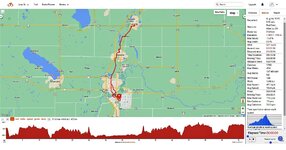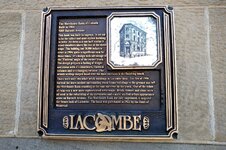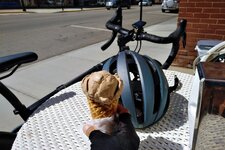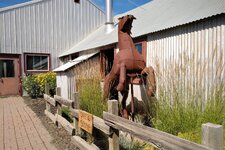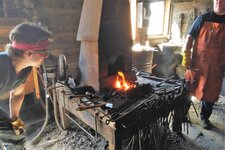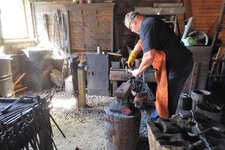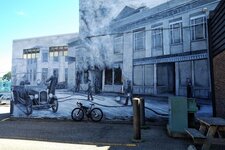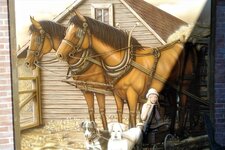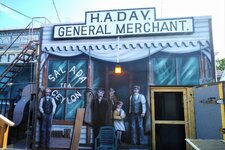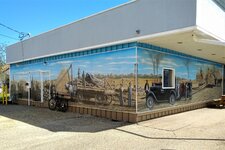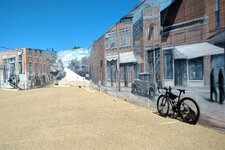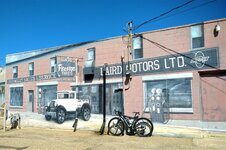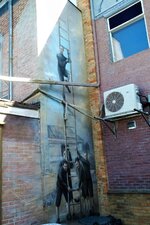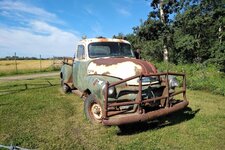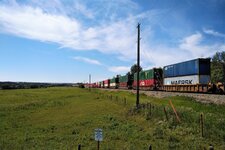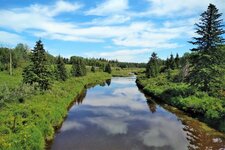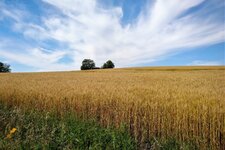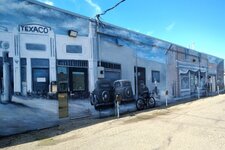Readytoride
Well-Known Member
- Region
- USA
- City
- Virginia
1 Day, 2 Rides, 3 people
Two rides yesterday. Different times, different people, different weather.

First ride was with A (herein after referred to as "1st A" and who is still learning to re-ride a bike after 40 years) who insisted she wanted to ride at least 12 to 15 miles today. I thought it might be a bit much because her steering is still wobbly and she had yet to finish a ride without falling (always at a standstill, thankfully), but she was insistent. She really really wants to make bicycling her new exercise passion.
So...I complied, selecting a gentle route that had multiple opportunities for cutting the ride short with an easy loop back home. Despite her derrier aching from the prior ride (8.6 miles three days ago) she was resolute in turning down each shortcut, even as her complaints over her aching backside increased in length and volume. The day was perfect with perfect temperatures, perfect scenery, and perfect gravel roads with almost zero traffic. A lovelier day never existed. I simply relaxed in her wake, watching and coaching as she continued her education in learning how to ride. We stopped at a derelict house to peek in the windows and look around the old place at what would need to be done to the "tear down" before it could be sold. At one time it had been a beautiful place set on almost 20 acres. But it was clear that years of neglect by the old woman who had owned it and lived there until her death a month ago had reached deep past the surface of peeling paint and rotting wood to encompass the bones of the house as well. So sad to see houses in this state of disrepair. Alas, the doors were locked and the windows in their rotting frames where shut tight, so no opportunity for us to poke around inside. We had to make due with peering through dirty windows into the dim interior.
Back on the bikes again, we stopped at a crossroads to chat with two other cyclists out riding with a bike shop group. There were more cyclists out on the gravel roads that morning than cars. In fact the cars were outnumbered 10 to 1. We spent a lot of time waving hello and calling out good morning in passing.
1st A's increasing level of discomfort with her aching rear end, however, was turning her smiles upside down, and suddenly she found great purpose in getting home ASAP, stopping only to take a business call, wait for a passing car (she has some real fear issues with cars passing either direction and is insistent on stopping and getting off the road) and hydrate at one or two stops signs. She was still thrilled to be out riding again, not to have fallen again, and has decided she is going to look at some bike shops to find a Class 2 with a throttle (because of her medical condition). I'm glad she's enjoying herself and her newfound sport. She's fun to ride with and very entertaining.

Second ride was with G and our mutual neighbor-from-down-the-road-a-piece A, herein referred to a "2nd A". This was 2nd A's first time on an electric bike. She's young(er) and does a lot of spin classes, so sitting on a bike is 2nd nature to her. She was borrowing G's LaFree, and so I met them at G's place for us to set off together.
Long and short - all three of us had a blast. G left the route planning up to me, and as I didn't know 2nd A's level of proficiency (which turned out to be excellent) or ability to cycle with traffic (some trepidation but not on the par of 1st A's concerns) I picked a nice 8 mile route that found itself being extended to 10, then 12, then ultimately 15 miles as 2nd A was having so much fun that she said she was happy to just keep riding. That was fine by me and G, but not so fine by the changing weather pattern. The sunny happy blue cloudless skies present during 1st A's ride were noticeably absent during 2nd A's ride. Clouds were now elbowing out any remaining blue left, and the temps were noticibly cooler. I checked my radar app at about 12 miles into the ride, a bit concerned at the line of developing rain just to our west. It was time to boogie on home, I said. No more "let's keep riding" anymore. We can ride further next time.
I hit my driveway and waved goodbye to G and 2nd A as they zipped past to ride the final mile back to G's house just as the first raindrops began to fall.
All three are leaving on separate vacations this week, so I'll have the roads to myself again.
Two rides yesterday. Different times, different people, different weather.
First ride was with A (herein after referred to as "1st A" and who is still learning to re-ride a bike after 40 years) who insisted she wanted to ride at least 12 to 15 miles today. I thought it might be a bit much because her steering is still wobbly and she had yet to finish a ride without falling (always at a standstill, thankfully), but she was insistent. She really really wants to make bicycling her new exercise passion.
So...I complied, selecting a gentle route that had multiple opportunities for cutting the ride short with an easy loop back home. Despite her derrier aching from the prior ride (8.6 miles three days ago) she was resolute in turning down each shortcut, even as her complaints over her aching backside increased in length and volume. The day was perfect with perfect temperatures, perfect scenery, and perfect gravel roads with almost zero traffic. A lovelier day never existed. I simply relaxed in her wake, watching and coaching as she continued her education in learning how to ride. We stopped at a derelict house to peek in the windows and look around the old place at what would need to be done to the "tear down" before it could be sold. At one time it had been a beautiful place set on almost 20 acres. But it was clear that years of neglect by the old woman who had owned it and lived there until her death a month ago had reached deep past the surface of peeling paint and rotting wood to encompass the bones of the house as well. So sad to see houses in this state of disrepair. Alas, the doors were locked and the windows in their rotting frames where shut tight, so no opportunity for us to poke around inside. We had to make due with peering through dirty windows into the dim interior.
Back on the bikes again, we stopped at a crossroads to chat with two other cyclists out riding with a bike shop group. There were more cyclists out on the gravel roads that morning than cars. In fact the cars were outnumbered 10 to 1. We spent a lot of time waving hello and calling out good morning in passing.
1st A's increasing level of discomfort with her aching rear end, however, was turning her smiles upside down, and suddenly she found great purpose in getting home ASAP, stopping only to take a business call, wait for a passing car (she has some real fear issues with cars passing either direction and is insistent on stopping and getting off the road) and hydrate at one or two stops signs. She was still thrilled to be out riding again, not to have fallen again, and has decided she is going to look at some bike shops to find a Class 2 with a throttle (because of her medical condition). I'm glad she's enjoying herself and her newfound sport. She's fun to ride with and very entertaining.
Second ride was with G and our mutual neighbor-from-down-the-road-a-piece A, herein referred to a "2nd A". This was 2nd A's first time on an electric bike. She's young(er) and does a lot of spin classes, so sitting on a bike is 2nd nature to her. She was borrowing G's LaFree, and so I met them at G's place for us to set off together.
Long and short - all three of us had a blast. G left the route planning up to me, and as I didn't know 2nd A's level of proficiency (which turned out to be excellent) or ability to cycle with traffic (some trepidation but not on the par of 1st A's concerns) I picked a nice 8 mile route that found itself being extended to 10, then 12, then ultimately 15 miles as 2nd A was having so much fun that she said she was happy to just keep riding. That was fine by me and G, but not so fine by the changing weather pattern. The sunny happy blue cloudless skies present during 1st A's ride were noticeably absent during 2nd A's ride. Clouds were now elbowing out any remaining blue left, and the temps were noticibly cooler. I checked my radar app at about 12 miles into the ride, a bit concerned at the line of developing rain just to our west. It was time to boogie on home, I said. No more "let's keep riding" anymore. We can ride further next time.
I hit my driveway and waved goodbye to G and 2nd A as they zipped past to ride the final mile back to G's house just as the first raindrops began to fall.
All three are leaving on separate vacations this week, so I'll have the roads to myself again.
Last edited:
